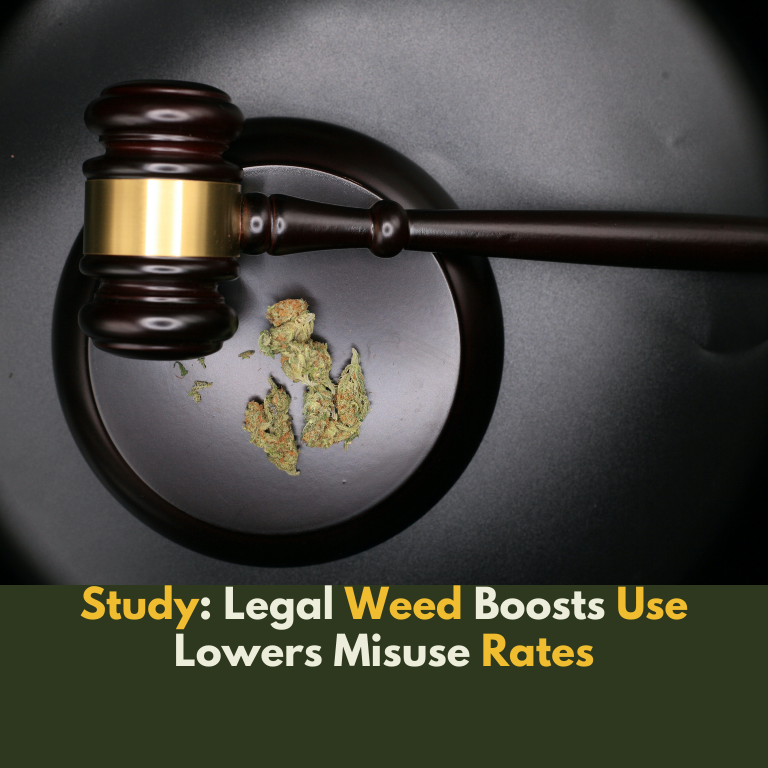Study Finds Cannabis Legalization in Canada Led to Increased Use but Less Problematic Misuse
In a significant development that could shape global cannabis policy discussions, a new study from the American Medical Association (AMA) reveals that while adult marijuana use in Canada has slightly increased since legalization, problematic misuse has actually decreased. The findings, published in the medical journal JAMA Network Open, provide a nuanced perspective on how legalization impacts public health.
The longitudinal study, conducted over five years from September 2018 to October 2023, tracked 1,428 Canadian adults between the ages of 18 and 65. These participants completed biannual assessments, providing researchers a detailed window into their cannabis use behaviors over time.
Legalization: A Turning Point
Recreational cannabis became legal across Canada in October 2018, making it the second country in the world to fully legalize adult-use marijuana at the national level. Since then, policymakers and researchers alike have been eager to evaluate how access to legal cannabis affects usage patterns, particularly misuse and dependency.
One of the key aims of the new study was to assess whether legalization influenced frequency and style of use, especially among users with different pre-legalization habits. It also investigated shifts in product preferences and potential shifts in public health outcomes.
A Slight Uptick in Frequency But a Downturn in Misuse
According to the findings, overall cannabis use among adults increased modestly. The mean proportion of days participants used cannabis rose by 0.35% annually—a total increase of about 1.75% over the five-year period. While this indicates more frequent usage, the authors caution that the increase was statistically but not necessarily clinically significant.
Interestingly, the biggest behavioral changes occurred among those who used marijuana daily before legalization. This group actually decreased their usage over time, in contrast to those who used cannabis infrequently prior to 2018, who reported a slight increase in use. In essence, occasional users used a bit more, while heavy users cut back.
But what stands out most is the trend in cannabis misuse. Researchers used the Cannabis Use Disorder Identification Test – Revised (CUDIT-R), a standard tool for measuring problematic use. The results showed a decline in misuse, particularly during the early stages of the COVID-19 pandemic (April–October 2020).
Participants who had used marijuana once a month or less before legalization saw the largest decreases in CUDIT-R scores, suggesting improved habits post-legalization. Those who had never used cannabis prior to 2018 did show a slight increase in misuse scores, potentially indicating some newcomers developed problematic use, albeit marginally.
Meanwhile, those who used cannabis weekly before legalization moved from average CUDIT-R scores above the threshold for problematic use to below it—a shift researchers say demonstrates a healthier relationship with marijuana.
Why Misuse Declined Despite Increased Use
The authors propose several explanations for this seemingly paradoxical result. One is the natural maturation of younger users, who often age out of problematic consumption patterns. “The apparent discrepancy between increasing cannabis use and decreasing cannabis misuse may have been driven by younger cannabis users,” the report notes.
Another possible factor is “regression to the mean,” a statistical phenomenon where extreme behaviors tend to normalize over time. Still, the researchers emphasize that their findings don’t indicate increased adverse effects for pre-legalization users.
A Shift Toward Safer Products
Legalization also appears to have changed how Canadians consume cannabis. The study documented a statistically significant drop in the use of combustible forms like flower and concentrates, along with a decrease in oils, tinctures, and topicals.
In contrast, the use of edibles, beverages, and vape cartridges has risen. Notably, cannabis oil cartridges and disposable vape pens saw the largest jump, with use increasing from 18.4% before legalization to 33% five years later.
These trends suggest a shift from traditional smoking toward non-combustible alternatives—generally viewed as less harmful to respiratory health.
Mixed Implications for Public Health
From a public health lens, the results are both encouraging and cautionary. While the uptick in usage frequency might raise alarms, the simultaneous drop in misuse and shift toward safer products offer compelling counterpoints.
However, they also point out that while the changes were statistically significant, they might not be clinically significant. The average CUDIT-R score fell by just 0.4 points on a 32-point scale over five years, underscoring the modesty of the improvement.
U.S. Data Show Similar Trends
The Canadian findings echo several trends emerging from the United States. A recent report from the Centers for Disease Control and Prevention (CDC) showed that 15.3% of U.S. adults used marijuana in 2022, with 7.9% using it daily. Smoking remains the most popular method, but edible and vape use continues to climb, especially among younger adults.
Moreover, an earlier CDC analysis revealed that cannabis use among high school students has declined, even as legalization has expanded. Another federal report from the Substance Abuse and Mental Health Services Administration (SAMHSA) found a slight dip in underage cannabis use nationwide.
Adding to the narrative, a separate poll showed more Americans now consume marijuana daily than drink alcohol—yet alcohol users are more likely to say they’d benefit from cutting back.
The Road Ahead
The AMA-backed study, partly funded by the Canadian Institutes of Health Research, offers a compelling contribution to the evolving global discourse on cannabis policy. While not without its caveats, the research suggests that legalization does not inherently lead to a public health crisis—and may, in fact, alleviate some long-standing issues related to cannabis misuse.
As lawmakers across the world weigh the pros and cons of adult-use legalization, studies like this provide critical data that could inform balanced, evidence-based policy. Whether in Canada, the United States, or elsewhere, the message is clear: legal access doesn’t necessarily mean irresponsible use—and in some cases, it might even help users develop healthier habits.
Topic(s):
OG source Download Article 
















